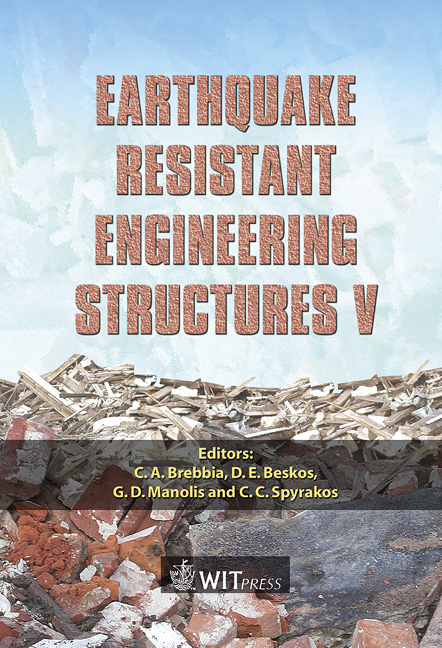Effects Of Configurations Of Shear Walls On System Behavior Under Seismic Load
Price
Free (open access)
Transaction
Volume
81
Pages
10
Published
2005
Size
501 kb
Paper DOI
10.2495/ERES050281
Copyright
WIT Press
Author(s)
U. Topal
Abstract
The main purpose of this study is to examine the effects of configurations of structural walls on the seismic behavior of multi-storey RC buildings. For this purpose, four different structural systems for buildings are considered. One of them is a frame system and the others are three different structural walls systems. Totally, four different buildings having 6, 10 and 12 stories are considered for analysis. The SAP2000 structural analysis program is used for analysis and the IDS-99 package program is used for determination of cross sections of columns, beams, slabs and structural walls. Finally, shear forces, bending moments and displacements obtained by seismic analysis for selected three columns in four different buildings, also forces and bending moments obtained for structural walls in three different structural wall systems are compared. Keywords: RC structural walls, seismic design, Turkish seismic design code, structural analysis. 1 Introduction In seismic zones, building resistance to earthquakes is often ensured by adopting structural systems where seismic actions are assigned to structural walls, designed for horizontal forces and gravity loads, while columns and beams are designed only for gravity loads. These systems, being stiffer than earthquake resisting frames, allow a better displacement control, limiting damage in internal partition walls and non structural elements. On the contrary, frame structures generally exhibit greater ductility, at the expense of large displacements and interaction problems between structural and non-structural elements (Riva et al. [1], Ghobarah and Youssef [2], Wang et al. [3], Salonikios [4]). The simple
Keywords
RC structural walls, seismic design, Turkish seismic design code, structural analysis.





